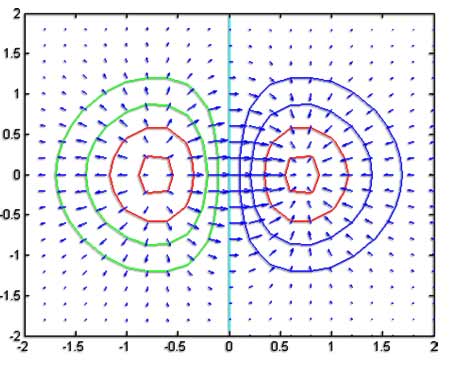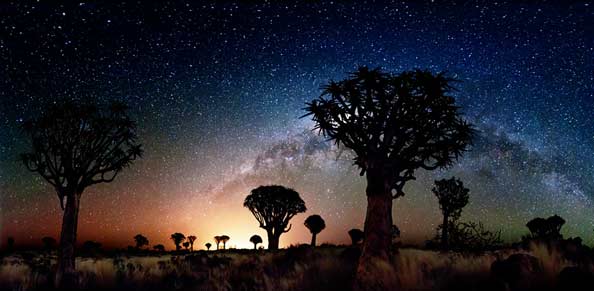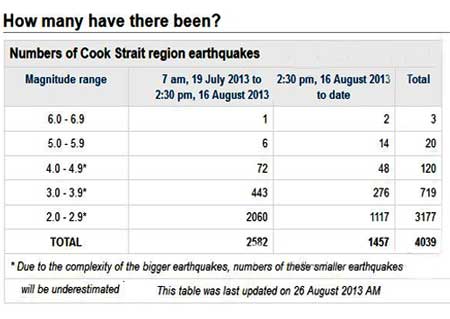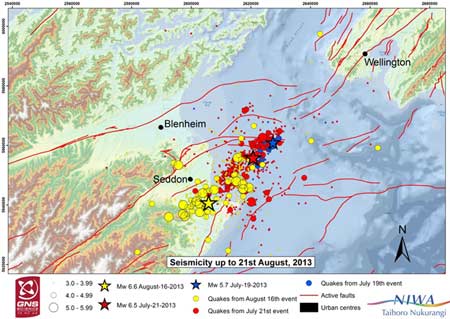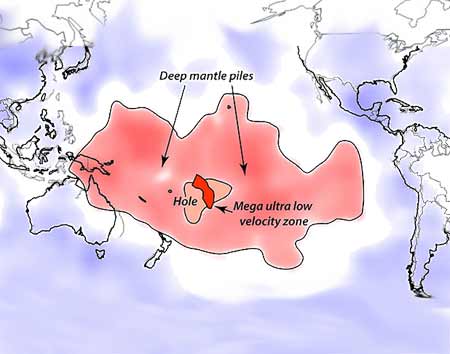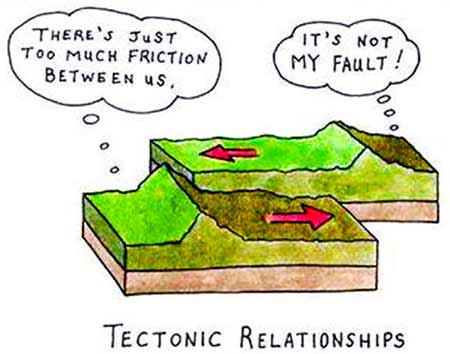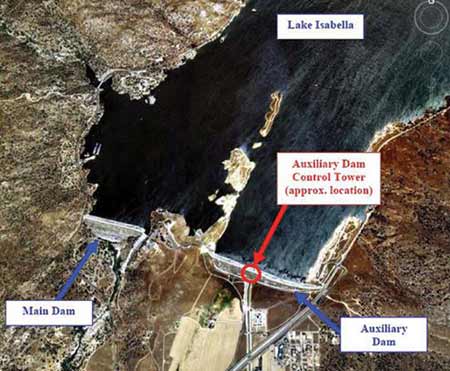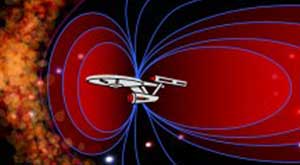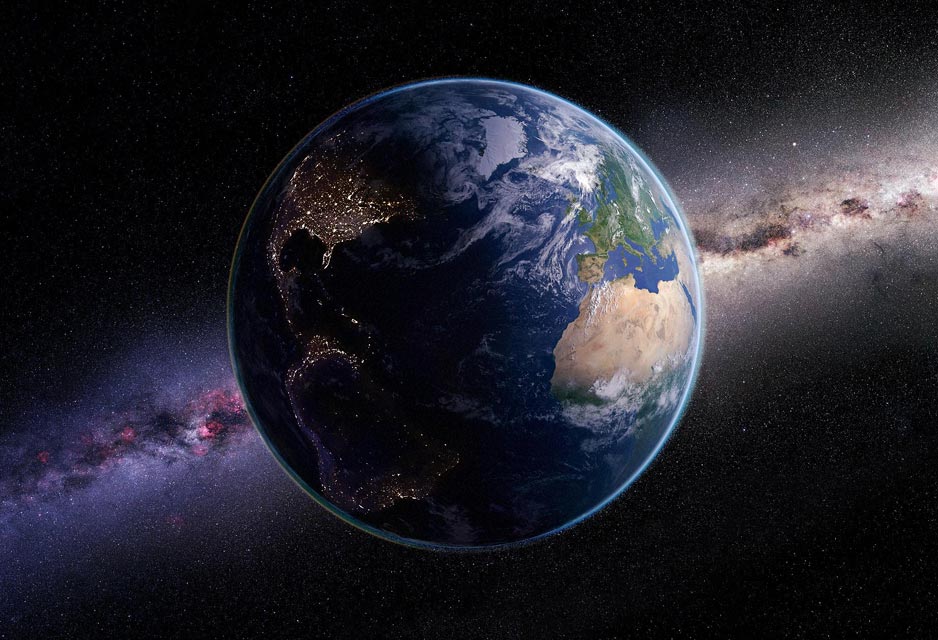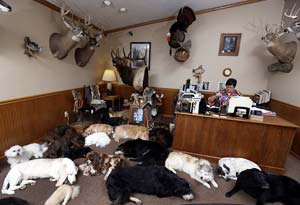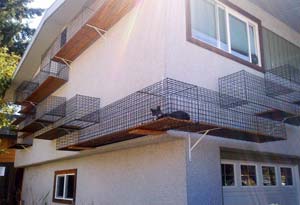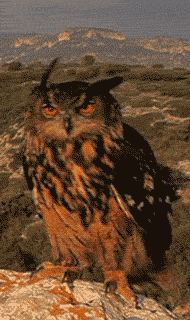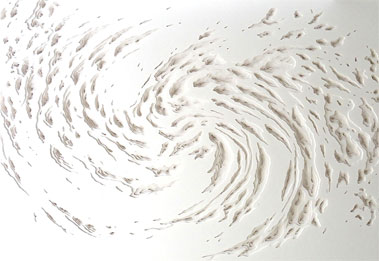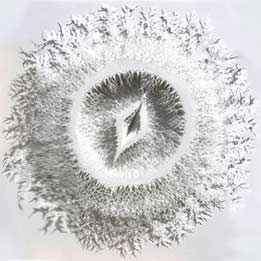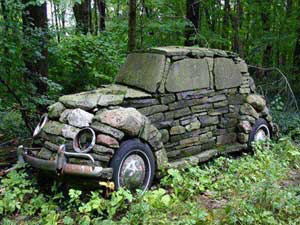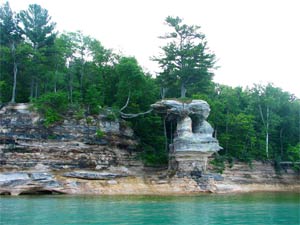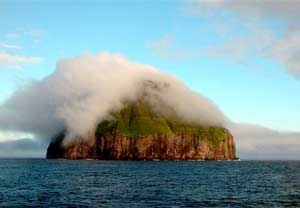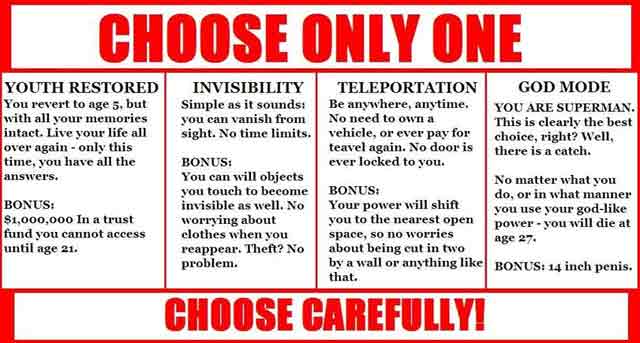Quiver? “Which meaning?” you may ask.
Quiver 1.1 is the name of a PADsynth oscillator variant that “makes pads, strings, effects and percussion a breeze, but also scales down to basses, leads and synth sounds.” I wish them well (and not that meaning).
- According to Wikipedia, a quiver is a container for arrows, bolts, or darts that is attached in various positions on an archer’s body, to his bow, or to the ground, depending on the type of shooting and the archer’s personal preferences. Quivers were once made of leather, wood, furs, and other natural materials, but are now more often made of metal or plastic.
- What a quiver means in mathematics is obscure to me even after reading this definition. However, I include it here for its eloquence:
In mathematics, a quiver is a directed graph where loops and multiple arrows between two vertices are allowed, that is, a multidigraph. They’re commonly used in representation theory: a representation V of a quiver assigns a vector space V(x) to each vertex x of the quiver and a linear map V(a) to each arrow a. In category theory, a quiver can be understood to be an underlying structure of a category, but without identity morphisms and composition. That is, there is a forgetful functor from Cat to Quiv. Its left adjoint is a free functor which, from a quiver, makes the corresponding free category.
A quiver diagram isn’t an aid to making better quivers. It’s a graph representing the matter content of a gauge theory that describes D-branes on orbifolds. While string theorists use the words quiver diagram, many of their colleagues in particle physics have taken to calling these diagrams mooses.
- A quiver tree (or kokerboom), Aloe dichotoma, is indigenous to Southern Africa, specifically in the Northern Cape region, and Namibia. Known as Choje to the indigenous San people, the quiver tree gets its name from their practice of hollowing out the tubular branches to form quivers for arrows. (This is not what I was expecting.)
- A group of cobras is called a quiver. Cobras are the only snake in the world that can spit their venom; they’re accurate up to about half their own length. King Cobras are the longest venomous snake in the world — the average male grows 18 feet long, and some have grown to more than 20 feet. In the wild, they live for 20 years, maybe more. Cobras aren’t poisonous, they’re venomous. This means that even though they possess sacs of deadly venom, they’re otherwise edible to predators. Cobras don’t always inject venom when they bite — they can “dry bite” if they wish. (Is their decision based on something I can influence should I need to? I’m guessing I should try to look neither threatening nor tasty.) Cobras vary in weight from a few ounces to 35 pounds.
To quiver is to shake or move with slight and tremulous motion, to tremble, to quake, to shudder, to shiver. You know — as in when you’re having an earthquake.
About Some Recent Earthquakes in Wellington
The safest place to be during an earthquake would be in a stationary store.
— George Carlin, Brain Droppings
Regarding Wellington (my home) and recent earthquakes: Wellington is a lovely city — perfect, even, in a lot of ways. But there are a few areas of reclaimed land around the waterfront. Wellington does have limited access from overland due to surrounding hills. And there are a few rather tall buildings. Furthermore, there’s a very real chance of a tsunami occurring, should an earthquake in a vulnerable area reach or exceed 7.2 (or so).
In the past 6 weeks Wellington has felt more than 4,000 earthquakes 2.0 and above. A (relatively) small fraction have been 4.0 and above, including three 6.0 and over, and another 20 that were 5.0 or greater. Yet there are, nevertheless, no fatalities, though many man-hours of productive time have been expended over the past month or two waiting breathlessly during each quiver to see if it kicks up into something worse (or even much worse), or if it just fades back into the rift from whence it sprang.
Wellington is a good 60 kilometres from the epicentres of the quakes occurring today — but that could change. If current quakes influence long fault lines associated with the boundary between Pacific and Australian plates, something far larger could get started. Marlborough quivers as if Earth herself persistently itches. The Awatere and Clarence faults are major splits in the crust 100s of kilometres long, running through North Canterbury, Marlborough, and on into Cook Strait. Wellingtonians are told that the minute we feel a big local quake so strong we can’t stand upright or else one that keeps going on quietly for a minute or more, then we get to high ground or else up in a tall building as quickly as possible — no time to hop in a car and drive away. A tsunami caused by a quake 15-20 kilometres away can be as high as 15 metres. And it can slam into the harbour, destroying everything in its path. Oh, joy.
The biggest earthquake/tsunami threats are the Cook Strait faults and the possibility of huge landslides in the Cook Strait trench. The tsunami triggered by the 8.2 magnitude quake on the Wairarapa Fault in 1855 was up to 5 metres high when it swept over Lyall Bay and Kilbirnie and into Evans Bay. A 10-metre wave struck Palliser Bay on the south Wairarapa coast. The tsunami also flooded Porirua Harbour, and hit Titahi Bay and the Kapiti Coast.
Several sources have drawn up maps showing evacuation zones for the most vulnerable areas. Unfortunately, not all the maps are identical (but close). A Red Zone is mainly a beach area that can be hit by a one-metre tsunami generated 1,000s of kilometres away and during which people are told merely to “stay off the beach.” The Orange Zone is based on a tsunami similar to that which happened in 1855. The Yellow Zone is based on how far the devastation might extend if a 10-metre wave struck. (On some maps, we’re in the orange zone, two blocks away from yellow. On others, we’re completely surrounded by orange on all sides. These differences may someday matter.) On average, a tsunami larger than one metre and as high as 3 metres hits the Wellington region every 84 years. At least 3 tsunami with run-up heights of 10 metres or more have occurred in the past 165 years (the period of written history in NZ). Two of these tsunami were generated by local earthquakes (1855 and 1947), the other by a large South American earthquake (1868). Tsunami with run-up height of 30 metres or more have been found in the geological record of the last 6,000 years.
Does this make you wonder why anyone would want to live in New Zealand? Like most places are so safe that nothing bad can happen?
An earthquake is such fun when it is over.
— George Orwell, Burmese Days
So, What’s Coming Up in the Future?
A “supervolcano” is forming deep below the earth’s crust north of NZ, which will have the power to destroy the world. However, scientists urge people not to worry — it could be 100 million years away. (Could be? Is this the best they can do?) Ingredients exist for a cataclysmic eruption that could cause massive destruction on Earth, but probably not for another 100-200 million years. Deep beneath the Pacific Ocean, near Samoa, continent-sized piles of rock collide as they move atop Earth’s core at its boundary with Earth’s mantle (which floats on top). There’s a huge zone of partly-molten rock forming. This has the potential to end in one of two ways: either it becomes a hotspot plume supervolcano eruption similar to one two million years ago at Yellowstone (covering most of North America in ash), or it otherwise becomes a huge flood basalt eruption, creating large areas of igneous rock (how the Pacific Northwest’s Columbia River basalts were created about 16 million years ago).
Yellowstone in the US, was host to a supervolcanic eruption in the geologic past and perhaps will be again. The US Geological Survey indicates about 2,000 earthquakes are produced annually in areas around the Yellowstone National Park, but the majority are too small to feel. The most significant earthquake in recent history occurred in 1959 to the west, near Hebgen Lake. That rare 7.5 magnitude quake killed 28 people in a landslide, and cost more than $11 million in damage. Yellowstone undergoes episodes of volcanic activity; the 3 most recent episodes were lava flows with minor explosive activity, the last one ending around 70,000 years ago. Yellowstone is far from dead.
And now, apparently, large earthquakes at distant parts of the globe set off tremors around waste-fluid injection wells in central US states. Furthermore, these minor quakes can be precursors to bigger quakes if pressure from waste injection pushes faults close to failure. At a set of injection wells in Oklahoma, a huge earthquake in Chile early in 2010 triggered a mid-size quake less than a day later, then months of small tremors culminated in the largest quake then associated with waste injection, a 5.7 event late in 2011. Earthquakes off Japan in 2011 and Sumatra in 2012 similarly set off mid-size tremors around injection wells in western Texas and southern Colorado. Humans appear able to negatively influence earthquakes. The importance of this is far from clear.
Q: What instruments does Nature use to kill us?
A: Sinkholes, tornadoes, hurricanes, fires, lightning, fire ants, killer bees, poisonous snakes, wasps, droughts, avalanches, mudslides, floods, heat waves, bitter cold, radiation, gravity, asteroids (and so on)...
Potential California Flood
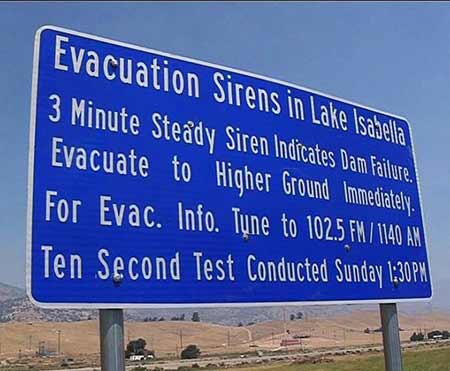
It Has Become a New Habit
- The Isabella Dam is an embankment dam located about halfway down the Kern River, between the towns of Kernville and Lake Isabella in Kern County, California. It’s an acute example of a widespread national problem because, of the 85,000 dams in the US, more than 4,400 are susceptible to failure for various reasons. Mending them all will cost billions.
- The stakes are high for the 4,000 residents of Lake Isabella and the 340,000 living in Bakersfield (40 miles downriver). For 6 decades, dual dams have controlled flooding on the Kern, helping Bakersfield grow and thrive. The lake that formed behind the dams became the main driver of the economy of Lake Isabella and other similar towns, bringing in fishers, boaters and whitewater rafters. The Army Corps of Engineers built and operates the almost-60-year-old dams, and they know them well — and acknowledge that the dams have serious problems:
1. One’s in danger of internal erosion. Water seeping through a dam erodes it from the inside out until it fails. Today, engineers build in drains and filters to stop erosion and allow infiltrating water to drain away. But Lake Isabella was constructed before such features were commonplace.
2. Water can flow over the top in extreme floods. To determine how big a spillway must be, you have to know how much water needs impounding behind the dam each year. In an extreme year with “probable maximum flood,” the Lake Isabella spillway is far too small. An overtopped dam can fail precipitously as water erodes the downstream side.
3. The fault known to be underneath it wasn’t inactive after all. There’ve been 3 significant earthquakes on the fault in the past 10,000 years with the last occurring about 3,400 years ago. Another may be due.
Luckily, should the dam fail, Bakersfield will have several hours before a wall of water makes its way down the canyon — that’s good, because 180 billion gallons of water along with mud, boulders, trees, and debris will mean the floodwaters turn parts of Bakersfield into a lake up to 30 feet deep. (In 1889, a calamitous dam failure in Johnstown, Pennsylvania killed more than 2,200 people downstream.) Officials say the odds of a disaster are small (better communication today) and steps have been taken to reduce risk (like limiting water stored behind the dam to 2/3 of what had been considered maximum). Longer-term modifications were recently approved but finding sufficient funding may slow things.
Nationwide, US dam repair costs are staggering. A 2009 report by officials put the cost of fixing the most critical — where failure could cause loss of life — at $16 billion over 12 years, with the total cost of rehabilitating all dams at $51 billion. But those figures don’t include Lake Isabella and 3,000 others owned by the federal government. The corps says that more than 300 of the roughly 700 dams it’s responsible for need safety repairs — estimating a $20 billion bill. The corps spent $24 million just sizing the problems at Lake Isabella.
But 2/3 of all dams are private, while financially struggling state and local governments own the remainder. It’s difficult to predict how needed repairs will be financed; legislation to provide federal money languishes in Congress, yet the number of high-risk dams rises as structures age and as more accurate information is obtained about existing hazards. Lake Isabella is one of 12 dams ranked in the highest category: serious problems with serious failure consequences (in Isabella’s case, it’s a large downstream population). 319 of the Army Corps of Engineers’ dams are currently actionable from a safety standpoint.
We don’t think about how we’re just vulnerable specks trying to survive on a violent, tumultuous planet,
at the mercy of hurricanes and volcanoes and asteroids and terrorists and disease and a million other things.
We concentrate on having little thoughts so we don’t have BIG THOUGHTS. . . .
You’ve got to ignore the one big truth — life is fatal.
— Deb Caletti, The Nature of Jade
We Need Space Travel! But…
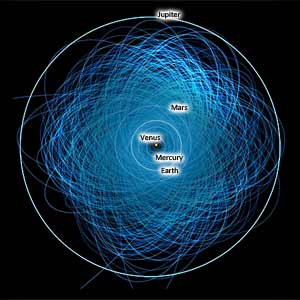
Asteroids in Near-Earth Orbit
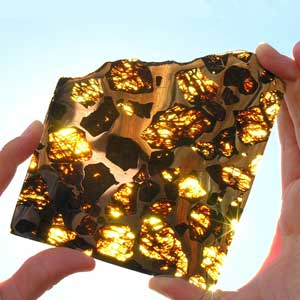
An Asteroid That Made It All the Way
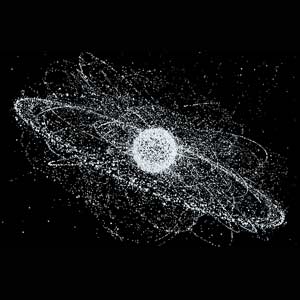
The Problem of Space Debris
Near-Earth objects (NEOs) are asteroids and comets that can approach the earth’s orbital distance to within about 28 million miles (45 million kilometres). They range in size from as small as a few feet to as large as 25 miles (41 kilometres) for the largest near-Earth asteroid, 1036 Ganymed. More than 10,000 asteroids and comets that can pass near us have now been discovered. Of the 10,000 discoveries, roughly 10% are larger than one kilometre in size — roughly those that could produce global consequences should an Earth impact occur.
The 4.5 billion-year-old Fukang meteorite was found in mountains near Fukang, China in 2000. It’s a pallasite — a type of stony–iron meteorite with striking olivine (peridot) crystals. It’s unknown how large the untouched meteorite was — an anonymous finder recovered a piece weighing more than 1,000 kilograms. Pallasites are extremely rare even among meteorites (only about 1% are this type). Peridot is a popular gemstone, usually cut, but sometimes used in cabochon to show chatoyancy (a “cat’s eye” effect). The peridot found on Earth is mostly mined in Northern Pakistan: it requires one week travel in trucks over dirt roads to reach the remote mines. Since walls of peridot are very hard, explosives are placed in mountain tunnels to create debris from which the peridot pieces can be collected.
The space even closer to Earth is worse with regard to unwanted debris. More than 18,000 chunks of junk larger than 10 centimetres across hurtle around the planet at 1,000s of kilometres per hour. These fragments of failed spacecraft, redundant satellites and spent booster rockets are accompanied by hundreds of thousands of smaller scraps of man-made space shrapnel, some with the potential to penetrate or destroy a functioning vessel. Unless the world’s space agencies — which among them launch roughly 120 spacecraft a year — find ways to stop the pollution and start a methodical clean-up, manned missions to the moon and Mars and the robotic exploration of outer space may be at risk. Launching a vehicle into space requires 2, 3, or even 4 stages, stacked atop each other like building blocks. The last stage places the payload, or space cargo, in the right position at the right time and then it, too, becomes junk. Each launch creates many bits, big and small. Most drop back to Earth, burning up in the atmosphere, but the rest remain in orbit for some time. No launch is completely clean — there’s no such thing. Sometimes space garbage collides with a spacecraft. This happened when a French spy satellite was damaged by a fragment the size of a briefcase travelling 20 times faster than a rifle bullet. Another incident forced NASA to consider making a critical avoidance manœuvre when space debris threatened to disrupt the International Space Station mission of the former shuttle Discovery.
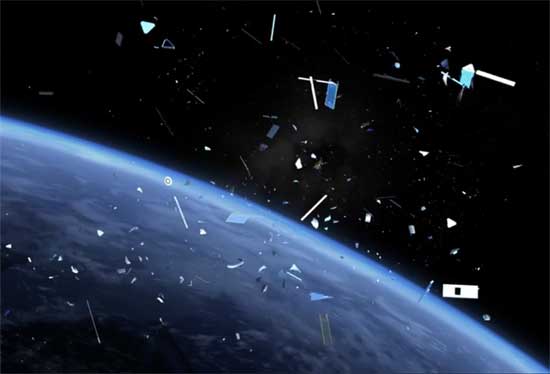
What Goes Up Doesn’t Always Come Down
When the Time Comes to Embark, Where Will We Go?
Our Universe Is Full of Planets
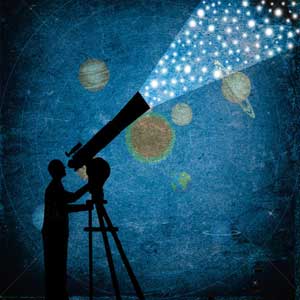
Not Enough Power For Interstellar Travel
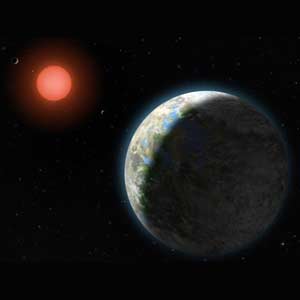
Mystery Force Slows Pioneer 10

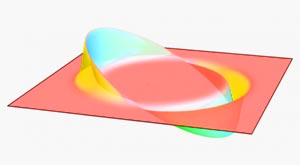
Faster-Than-Light Can Mean Explosions
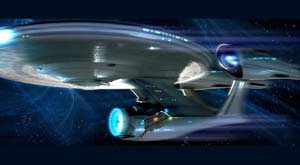
Is Warp Speed Even Possible?
Using techniques of exquisite sensitivity and technological finesse, astronomers have spent the past two decades on an astonishing voyage of cosmic discovery. We’ve found the universe to be full of planets: cold, small, and dark next to their large and glaring suns, these worlds have previously been hidden from us. But we now have firm evidence for thousands of them, around thousands of stars. We also know something about the sizes, orbits, and often ages of these worlds. For planets of Jupiter’s or Neptune’s size, we measure the temperature of their upper atmospheres and sniff their gaseous chemistry, finding sodium, methane, and water. It’s a rich bounty taking even scientists by surprise. Statistics tell us an astonishing 1 of every 7 stars harbours a planet similar in size to Earth, at roughly the right orbital distance to allow for a temperate surface environment. In other words, 15% of all suns could host a place suitable for life as we know it. (The rest may host life, but of a kind we may not yet recognise.) Indeed, there’s a 95% confidence that one of these worlds could be within a mere 16 light years away from us. That’s a stone’s throw, practically in our galactic backyard. And it’s only the tip of the proverbial iceberg. Even in our own solar system we think environments inside ice-rich moons around Jupiter and Saturn could represent life-amenable zones. Opportunities for life seem enormous.
Interstellar travel won’t be possible for at least 200 years. Forget cost, political will, and all the other variables — simply obtaining enough energy will take until 2196, according to the former head of NASA’s Breakthrough Propulsion Physics Project. There are two possible trips: An aimless interstellar colony ship, and a 75-year-long mission to Alpha Centauri. The energy required to launch the space shuttle during the past 30 years was a fraction of the nation’s total available energy. If the same ratio holds for interstellar flight, a 500-person ship on a one-way journey, would need at least an exajoule — that’s 1,018 joules, a little bit less than all the energy consumed by the entire world in one year. To slow down upon arrival would require another exajoule or so. Even without accounting for fuel, a 500-passenger ship wouldn’t be able to launch until around 2200 at the earliest. Other studies suggest that 100 exajoules would be needed. Interstellar colonies won’t happen in my lifetime — unless something significant changes.
Thirty years ago, NASA scientists noticed that 2 of their spacecraft, Pioneer 10 and Pioneer 11, were veering off course slightly, as if subject to a mysterious force. The wider scientific community got wind of it and raised it to the physics equivalent of cult status. After spawning close to 1,000 academic papers, international conferences, and entire scientific careers, this cosmic mystery may be solved soon. NASA launched Pioneer 10 in 1972 and Pioneer 11 in 1973. Their mission was to gather information about the asteroid belt, Jupiter, Saturn, and their moons. As they hurtled past, probes measured previously unknown properties of atmospheres and surfaces and photographed Jupiter’s Red Spot and Saturn’s rings up close for the first time. After completing their flyby, they kept going — the first man-made objects to plunge into interstellar space. In order to detect oddities in their motion, scientists needed to know what to expect in the first place, so they constructed an algorithm of staggering complexity which included: deceleration due to the gravitational pull of the sun, planets, moons, asteroid belts, and comet clouds; the sun’s radiation weakening with distance; an increase in delay time for radio wave bounces; the gravitational drag from the sun on radio waves; frequency shifts caused by Earth’s rotation… and much more. Unfortunately it didn’t seem describe reality. Expected and actual motions didn’t quite match up — they were slowing too much by a few hundred miles a year. Was it due to outgassing (fuel dripping from thrusters, thus exerting a slight recoil force)? Apparently not — when propulsion stopped, presumably stopping any fuel drip, the delay stayed. How sure NASA was about the strength of gravity? The anomaly almost exactly equalled the so-called “cosmic acceleration” — the speed of light ‘c’ multiplied by the Hubble constant ‘H’ — suggesting the anomaly’s cause lay within the foundation of physics itself. Was this evidence that gravity deviates from an inverse-square dependence? Tentative evidence of anomalies in the trajectories of earlier spacecraft Ulysses and Galileo were explored — it appeared that all freely-floating craft may have had a similar problem. The plutonium inside their generators gave off 2,500 joules of thermal energy per second at the height of power. Some got converted into electricity to run instruments; the rest radiated away. If heat radiated unevenly, this would unbalance recoil. But as the plutonium decayed, heat decreased. Yet the anomaly stayed. At conferences and meetings in Germany, Switzerland, and the US, scientists pronounced such theories as: The anomaly really reflects a cosmic acceleration of time itself! The anomaly shows that Riemannian geometry, from which Einstein’s space-time is built, is incomplete! We have discovered a new force! The solar system is expanding! The solar system is a hologram! String theory dimensions are tugging on the spacecraft! (Instead, at least one problem — among many — was that 30 years of earthquakes had shifted the locations of antennas that received Doppler data.)
UK scientists are working on a deflector shield to enable transport of humans between planets and stars without subjecting them to lethal doses of cosmic radiation. This research is vital: numerous groups, including NASA, look to send humans to Mars. Without providing adequate shielding from the sun’s harsh cosmic rays, it could be a one-way trip full of vomiting, diarrhœa, and even more serious symptoms of radiation poisoning (including death). The biggest barriers to sending humans to other planets are time, money, solar radiation (from flares and coronal ejections) and galactic cosmic rays (GCRs), rays whose exact origin remains unknown — perhaps supernovae or dense nuclei in other galaxies. High-energy protons constantly bombard every square inch of the solar system, including Earth. Being hit by high-energy protons is bad news; hit enough, you develop radiation sickness, tissue degeneration, and, all too often, cancer. For the most part, we’re protected here on Earth — our atmosphere absorbs most solar radiation and our magnetic field deflects all but the most powerful GCRs. The sun’s interplanetary magnetic field deflects GCRs at the edge of the solar system (the heliopause that Voyager-1 recently traversed). As a result, Earthlings receive very little radiation from space — about 0.4 milli-Sieverts (mSv) per year. Astronauts aboard the Apollo missions, travelling far from Earth’s atmosphere and magnetic field, received on the order of 1.2 mSv per day, or 1,100 times more radiation than those on Earth’s surface. It’s estimated that a trip to Mars could expose astronauts to as much as 1,000 mSv (1Sv) or more. Spacecraft are going to need adequate radiation shielding. The Rutherford Appleton Laboratory in the UK has devised a “mini magnetosphere” that recreates the protection provided by Earth’s magnetic field; they’ve used this to protect a scale spacecraft from radiation. They’re now working on a concept spacecraft, Discovery, whose full-scale magnetosphere can (in theory) take humans safely to Mars. The magnetosphere method is lighter than conventional radiation shielding (which usually consists of thick metal plates). Other viable methods have also popped up, most notably Inspiration Mars, which will send two humans to Mars in 2018, employs a radiation shield fashioned of food, water, and poop stored against the hull of the spacecraft.
Imagine you’ve travelled all the way across the galaxy to a faraway, potentially life-embracing planet orbiting a faraway star, only to obliterate your destination upon arrival. It’s a very real threat. A spacecraft emerging from a warp drive does so quite violently, releasing an accumulation of high energy particles that would annihilate anything in their path. The warp drive (proposed by Mexican physicist Miguel Alcubierre) is a theoretical mechanism by which a spacecraft could deform the space-time continuum in a bubble around itself so as to travel faster than the speed of light while still staying within the parameters of special relativity. It turns out that bending the space-time continuum has hazards. During faster-than-light travel, particles get trapped and accumulate in front of the warp bubble (some can even enter it). The longer the bubble travels, the more particles accumulate. When the spacecraft decelerates at its destination, energy is released all at once that is so strong that virtually anything around is instantly destroyed. The particles that worm their way inside the bubble could threaten the spacecraft itself. Drop out of warp too close to your destination planet and you inadvertently wipe it off the interstellar map. Don’t tell The Galactic Empire.
Jules Verne’s 20,000 Leagues Under the Sea inspired American Simon Lake to invent the submarine. In H G Wells’ 1914 book The World Set Free, a scientist unlocks the secret of atomic bombs in the year 1933. Hungarian physicist Leo Szilard read Wells’ book in 1932 and made that discovery his goal. By 1933, he’d figured out the chain reaction process. Math says there’s a wormhole at the middle of a spinning black hole. To keep it open requires negative matter to stabilise it into a transversable wormhole: one you can use to go back and forth freely. Negative matter means negative mass (under gravity this mass falls up, not down). In Star Trek, they call it di-lithium crystals: they open gateways through space and time. Physicists use the term “negative matter”, though none of them has ever seen any such thing. If you enter a black hole and fall through its (somehow-stabilised) wormhole, would you be spaghettified by tidal forces? No. A large black hole has a very small tidal force — which decreases the larger it gets (defies common sense, but that’s what equations show). Small black holes are the dangerous ones: their gravitational fields are intense and will rip you apart. But about 10 years ago, Mexican relativist Miguel Alcubierre watched Star Trek and came up with a new solution to Einstein’s general relativity equation. Alcubierre’s loophole is negative matter — which Einstein didn’t consider. The solution looks similar to warp drives — everyone assumes you must break the light barrier and violate laws of physics to go really fast, but no — you can compress space like an accordion between you and the stars (you can wrinkle it). Einstein never said that nothing can go faster than light — empty space can contract or expand faster than light speed. The Big Bang was emptiness expanded and would’ve looked very similar to warp drive in the movies — starlight distorted, coming very fast at you, while you sit there and feel nothing. Remember, there are no laws of physics that prevent most of what you see in the movies, just current engineering problems.
A Closer Look at Black Holes
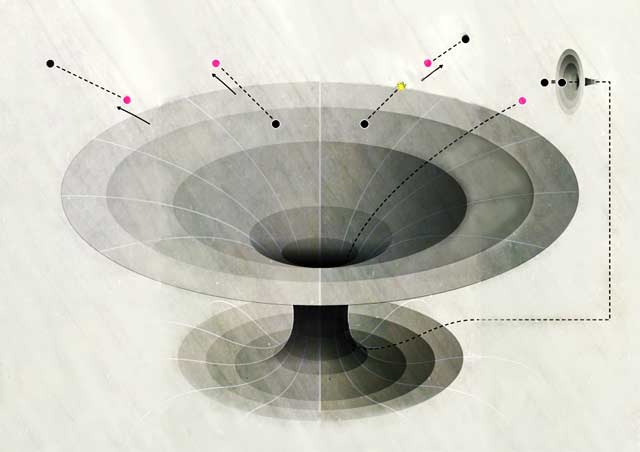
Smooth Ride Down? Or Not? (It Matters)
What will happen if you jump into a black hole, that fearsome gravitational monster that swallows matter, energy and even light? You’ll die, sure, but how? Crushed into less than a dust mote by monstrous gravity, as astronomers and science fiction writers say? Or flash-fried by a firewall of energy, as new calculations indicate?
Having information flowing out of a black hole is incompatible with having smooth space-time as its boundary (called its event horizon). In its place would be a discontinuity that manifests itself as energetic particles (dubbed a “firewall”) lurking just inside the black hole. Stephen Hawking, British cosmologist, stunned the world by showing that when the paradoxical quantum laws that describe subatomic behaviour are taken into account, black holes must leak particles and radiation, and in fact they’ll eventually explode (although for a hole the mass of a star, it’ll take longer than the age of the universe for that to happen). This radiation coming from the black hole, Hawking said, is completely random, conveying no information about what already fell into it. Then when it finally explodes, all information that it contains will be erased from the universe forever. Particle physicists cry foul at rhis comments, saying that he violates a basic tenet of modern science and quantum theory, that information is always preserved.
Firewall or not? Does information live or die? Is Einstein at last wrong? Experiments wouldn’t help even if we had a black hole in a laboratory, because the firewall, if it exists, would be just inside where it can’t be seen safely. Physicists are back where they were 40 years ago. In some ways, it would be easy to just give up on quantum field theory, which was conceived to describe what empty space looks like in the case of someone being accelerated, say by gravity pulling him down into a black hole. General relativity is based on what Einstein later called his “happiest thought,” that a freely falling person wouldn’t feel his weight. It’s known simply as the equivalence principle and it says that empty space looks the same everywhere and to everyone. One consequence of this principle is that an astronaut won’t feel anything special happening when he falls through the point of no return (the event horizon), into a black hole. Like a bungee jumper, he’ll feel weightless all the way until he hits the bottom (seconds or years depending on the size of the black hole); then he’ll be stretched like a noodle by tidal forces and crushed into a speck. But at the event horizon there’ll be “no drama,” in the lexicon — at least in the physical sense (as opposed to his intellectual trauma of knowing he’ll never get back home). Things or people go in, they’re crushed to infinite density; they disappear forever — no drama. But being incinerated by energetic particles just as you enter a black hole contradicts that “no drama” dictum. The existence of a firewall means the horizon, though it’s empty space, is actually a special place. This pulls the rug out from under Einstein’s principle, his theory of gravity, and modern cosmology, which is all based on general relativity. Either it empty space isn’t special, or else it isn’t empty.
This presents scientists with a “menu from hell.” Are we misunderstanding something? If the firewall argument is right, one of 3 ideas that lie at the heart and soul of modern physics, has to be wrong. Either information can be lost after all; Einstein’s principle of equivalence is wrong; or quantum field theory, which describes how elementary particles and forces interact, is wrong and needs fixing. Abandoning any one of these is revolutionary or appalling or both.
Black holes can come in pairs connected by shortcuts through space — once known as Einstein-Rosen bridges, now known as wormholes. A wormhole can’t be traversed by any means we currently know about (thus ruling out time travel and other violations of relativity), despite dreams of science fiction writers and interstellar pioneers. But in 2010, a theorist at the University of British Columbia suggested that such wormholes were geometric manifestations of quantum entanglement. Rather than a tunnel snaking through hyperspace and opening at another black hole, he felt wormholes would split into a zillion spaghetti-like strands each ending on the pieces of Hawking radiation. The radiated information would still be connected to the interior of the black hole, so that would mean information isn’t being destroyed after all and everything’s right with the universe.
It’s rather like a doorway in New Jersey opens into a basement in Manhattan — logically possible, perhaps, but certainly unexpected.
Earth’s Terminator
The Earth’s Terminator isn’t a superhero gone bad — it’s a circular line that separates the portions of the earth experiencing daylight from the portion of the planet experiencing darkness. The terminator passes through any point on the earth’s surface twice a day, once at sunrise and once at sunset, apart from polar regions where this only occurs when the point is not experiencing midnight sun or polar night. While one half of the earth is illuminated at any point in time (with exceptions during eclipses), the location of the terminator line varies by time of day due to the rotation of the earth on its axis as well as the revolution of the earth around the sun.
The terminator line also varies by time of year: the angle of the line is almost parallel to lines of longitude during the equinoxes, and it is at its maximum angle of approximately 23.5° to the equator during the solstices. At the equator, under flat conditions (no obstructions such as mountains; or at a height above any such obstructions), the terminator line moves at approximately 1600 kilometres per hour (1,000 miles per hour). This speed can appear to increase when near obstructions — such as the height of a mountain, for example — because the shadow of the obstruction will be cast over the ground in advance of the terminator line along a flat landscape.
The speed of the terminator line decreases as one approaches the poles, where it can reach a speed of zero (full-day sunlight or darkness). Supersonic aircraft are the only aircraft able to overtake the maximum speed of the terminator. However, slower vehicles can overtake the terminator at higher latitudes and it is possible to walk faster than the terminator at the poles, near to the equinoxes. (The odd visual effect from this is that you could see the sun rise in the west.)
Everything Else
A Sampler of Unusual Pets
Let Me Warm You Up a Little

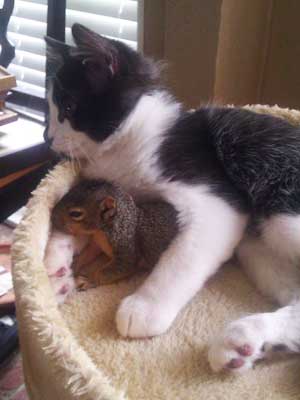
You’d Never Know She’s Adopted

It’s the Hannah Montana Shampoo

Sorry, It Stuck to My Foot
- Sobe the iguana and Johann the cat were both rescued by a woman in Brooklyn, NY. They struck up a friendship — in fact, the iguana enjoys spending time with several housemates, including Monte the cat and Buster the bunny. After his morning nap under heat lamps, Sobe is ready for a social life. He makes the rounds, visiting every animal resident in the house, including a dog, 12 cats, and 2 parrots. Sometimes he naps with one of the cats; occasionally Cato the parrot perches on his tail, grooming him.
- Receptionist Lessie Calvert sits behind her desk surrounded by freeze-dried animals at Anthony Eddy’s Wildlife Studio in Slater, Missouri. Animal lovers from across the country call on Anthony Eddy and his team to faithfully preserve their beloved departed pets for posterity through a freeze-drying process that can take up to a year before they are painstakingly prepared and returned to their owners.
- Something about this really appeals to me. Cats must love it.
- This little squirrel keeps coming in through a dog door to hang out with the family’s cat.
- The raccoon’s name is Rebekah. Unfortunately, the video of her taking a shower became so popular that she came to the attention of the authorities and was removed from the household and re-homed into the wild. Is she happier? That’s maybe too hard to standardise.
- Wallabies play with toilet paper just like puppies do.
Animals and Art

Eternal Things: Camel, Desert, Sun
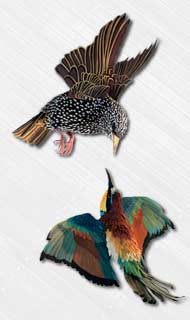
3D Birds Sculpted from Paper
- Cliff Vestergaard is an artist in Nerang, Australia who is said to have a knack for paintography. I don’t know if that means he paints like a photograph or on a photograph. Whatever. He seems to have mastered the knack of painting mammatus clouds.
- Diana Herrera’s work has begun appearing in several galleries and exhibitions around the world including Beers Lambert Contemporary earlier this year and at the Art and Soul of Paper earlier this spring. She’s currently working on a collection of 8 sculptures that will be on view at The Cornell Fine Arts Museum in Florida starting 17 September. See more on Flickr.
- This owl lives somewhere in the French wilderness.
Paper Cuts
Arch 3.3 by Eric Standley

- Inspired by Gothic and Islamic architecture, artist Eric Standley constructs intricate stained glass windows from numerous sheets of laser cut paper. His most recent work, is made from over 100 sheets. Standley’s names for his finished works are less inventive than the artworks themselves. See much more of his work in his artworks gallery.
- Artist Rogan Brown creates intricate sculptural forms reminiscent of microorganisms, plant life, and topographical charts by deftly cutting patterns in layer after layer of paper. A single work can take upward of 5 months to complete, and just like the organic forms he seeks to emulate the piece evolves as he works without a preconceived direction or plan. The artist says his finished artefact is really only the ghostly fossilised vestige of his slow, long process of realisation. He feels that paper captures perfectly that mixture of delicacy and durability that characterises the natural world. You can see more of his work in higher resolution in his portfolio.
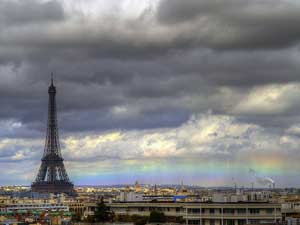
Horizontal Rainbow in Paris
- What is pictured above is just a common rainbow. Its uncommon appearance is caused by the sun being unusually high in the sky during the rainbow’s creation. Since every rainbow’s centre must be exactly opposite the sun, a high sun reflecting off distant rain will produce a low rainbow where only the very top is visible — the rest of the rainbow is below the horizon. Furthermore, no two observers see exactly the same rainbow — every person finds himself exactly between the sun and the rainbow’s centre and every observer sees the colourful circular band precisely 42° from rainbow’s centre.
- Stephen Gibian was the builder of this stone car in 1976 in Ithaca, New York USA. There was a rusted hulk of a 60’s Beetle in the field and, nearby, the remains of a stone foundation. He put the two together.
- Pictured Rocks National Lakeshore is a US National Lakeshore on the shore of Lake Superior in the Upper Peninsula of Michigan. The rock holding aloft the single tree is called Chapel Rock. Note that the tree is connected to its brothers by a thick, twisted root. More photos here. Part of this National Lakeshore, which ranges for 42 miles, is 15 miles of colourful sandstone cliffs. Sandstone erodes. Over millennia the cliffs have been sculpted in to any number of wonderful shapes, from caves and arches to formations that look like human faces or the turrets of romanticised medieval castles. Chapel Rock is one such rock along the cliff side. In the 1940s the rock was not a pillar — it was an arch.
A Straight Line without Hitting Land from Pakistan to Russia
Leaving Pakistan, Sail South and West
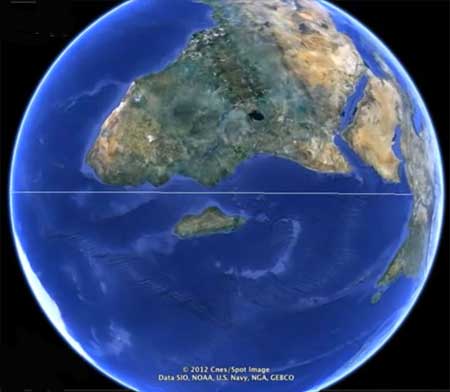
Headed for the Strait of Magellan
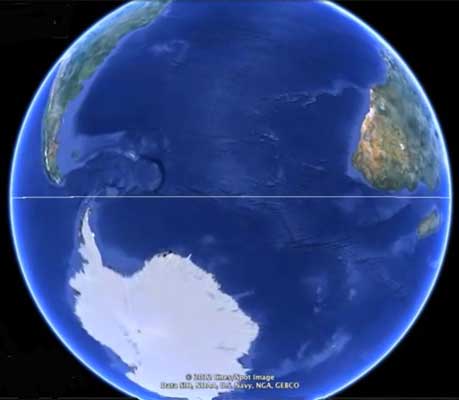
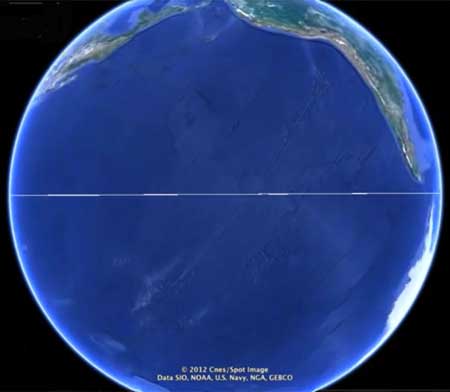
Wrap around the Bottom of the Earth, Head Back North and West

Assuming You Miss All the Aleutian Islands: You’ll Hit Russia
Sail from Pakistan to Russia in a straight line.
Funny Islands
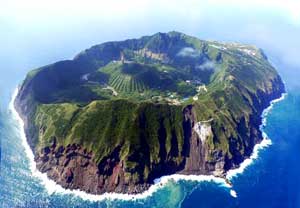
Japan’s Aogashima Volcano
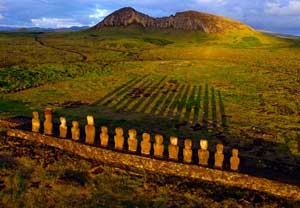
Moai Facing Inland at Ahu Tongariki
- Aogashima is a volcanic Japanese island in the Philippine Sea. The island is administered by Tokyo, being located approximately 358 kilometres (222 miles) south of there and 64 kilometres (40 miles) south of Hachijō-jima. It is the southernmost and most isolated inhabited island of the Izu archipelago. The village of Aogashima administers the island under Hachijō Subprefecture of Tokyo Metropolis. As of 2009, the island’s population was 205 on almost 9 square kilometres. The history of human settlement on Aogashima is uncertain. Most of the people there are Japanese. The island is mentioned in Edo period records kept at Hachijō-jima, which recorded volcanic activity in 1652, and from 1670-1680. An earthquake swarm in July 1780 was followed by steam rising from the lakes in the Ikenosawa Caldera. Further earthquakes in May 1781 led to an eruption. In April 1783, lava flows from the Maruyama cone resulted in the evacuation of all 63 households on the island. During a massive eruption in 1785, some 130-140 of the population of 327 islanders perished.
- Lítla Dímun is a small island between the islands of Suðuroy and Stóra Dímun in the Faroe Islands of Denmark. It is the smallest of the main 18 islands, being less than 100 hectares (250 acres) in area, and is the only uninhabited one. The island can be seen from the villages Hvalba and Sandvík. The name means “Little Dímun”, in contrast to Stóra Dímun, “Great Dímun”. “Dímun” may represent a pre-Norse, Celtic place name element, with di representing “two”. The island has been identified as an Important Bird Area by BirdLife International because of its significance as a breeding site for seabirds, especially European Storm Petrels (5,000 pairs) and Atlantic Puffins (10,000 pairs).
- The Rapa Nui are the native Polynesian inhabitants of Easter Island, or Rapa Nui, in the Pacific Ocean. Easter Island is one of the most remote inhabited islands in the world. The nearest inhabited land (50 residents) is Pitcairn Island at 2,075 kilometres (1,289 miles), and the nearest continental point lies in central Chile, at 3,512 kilometres (2,182 miles). The easternmost Polynesian culture, the Rapa Nui people currently make up 60% of Easter Island’s population and have a significant portion of their population residing in mainland Chile. They speak both the traditional Rapa Nui language and the primary language of the island, Spanish. At the 2002 census there were 3,304 island inhabitants — almost all living in the village of Hanga Roa on the sheltered west coast. As of 2011, Rapa Nui’s main source of income derived from tourism, which focuses on the giant sculptures called Moai, 887 human figures carved from rock between 1250 and 1500 CE and transported throughout Easter Island to face the ocean. The moai were believed to be the living faces of ancestors and had all been toppled by 1868. The moai rest on large stone platforms called ahu, the most famous of which are Ahu Tongariki, the largest ahu, and Ahu Vinapu, an ahu theorised to have been built by Incan Tupac Yupanqui. Some moai have hats of red volcanic stone known as Pukao. Currently, the Rapa Nui and the Chilean government are focused on preserving and restoring the statues including denoting an area that includes many of the statues, Rapa Nui National Park, as a World Heritage site.
A man goes into a food store and asks the clerk, “Mister, do you have dates?”
The clerk responds, “Dates? I don’t have dates.”
So the man says, “Okay, do you have nuts?”
The clerk responds acerbically, “If I would have nuts, I would have dates.”
 Animals
Animals Animation
Animation Art of Playing Cards
Art of Playing Cards Drugs
Drugs Education
Education Environment
Environment Flying
Flying History
History Humour
Humour Immigration
Immigration Info/Tech
Info/Tech Intellectual/Entertaining
Intellectual/Entertaining Lifestyles
Lifestyles Men
Men Money/Politics/Law
Money/Politics/Law New Jersey
New Jersey Odds and Oddities
Odds and Oddities Older & Under
Older & Under Photography
Photography Prisons
Prisons Relationships
Relationships Science
Science Social/Cultural
Social/Cultural Terrorism
Terrorism Wellington
Wellington Working
Working Zero Return Investment
Zero Return Investment
